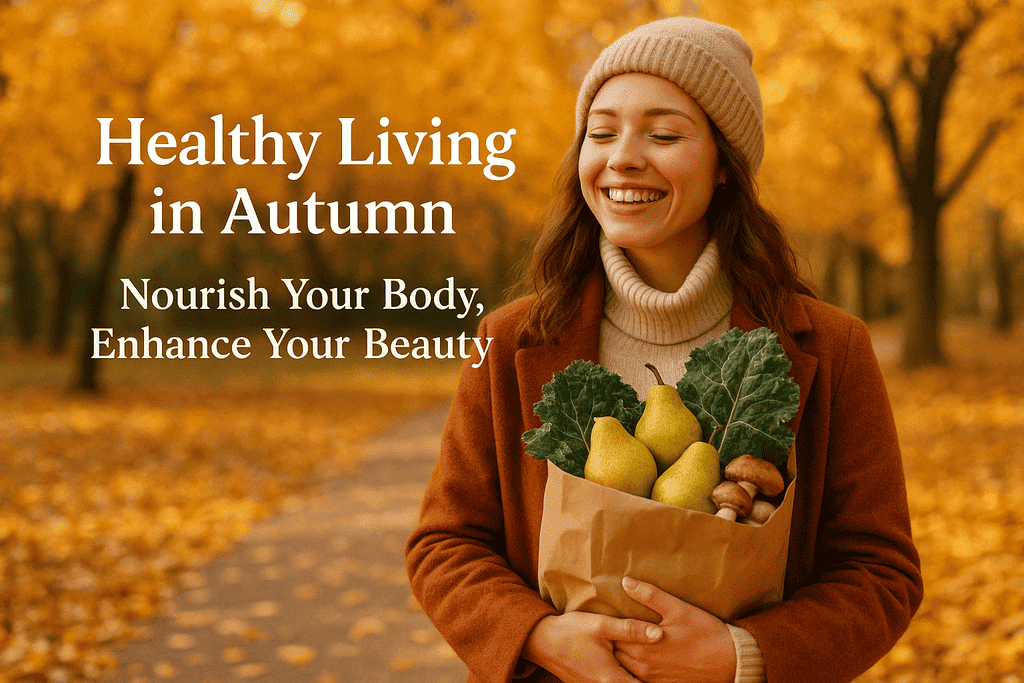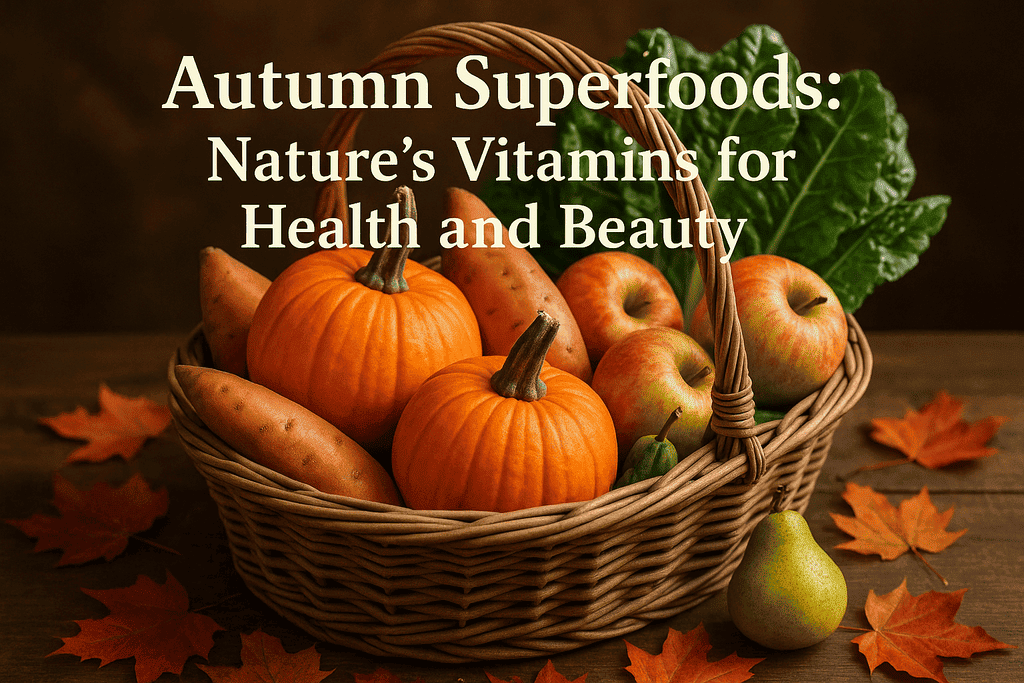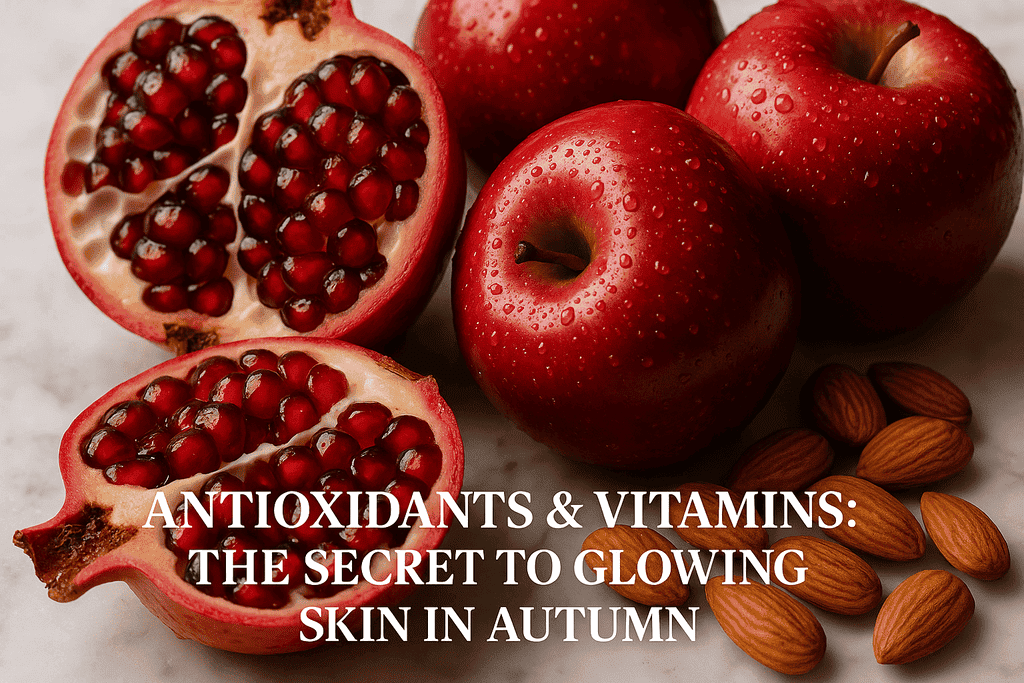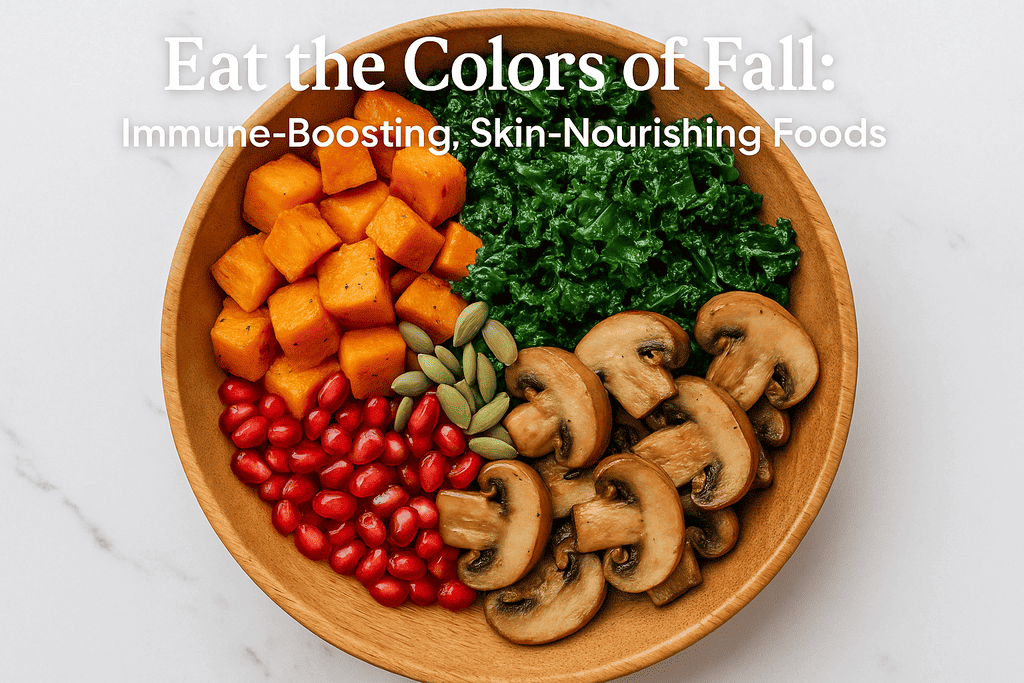
Introduction
Autumn brings cooler air, cozy flavors, and an abundant harvest of nutrient-dense produce. Choosing vitamin-rich fall foods helps support immune function, preserve skin elasticity and glow, support bone health, and maintain energy as daylight shortens. In this guide you’ll find practical, science-backed advice on the best autumn superfoods, how they support health and beauty, evidence from recent studies around the world, and an easy reference table you can use when shopping at the market. The recommendations emphasize whole foods and seasonal variety so your plate supplies a spectrum of essential vitamins—A, C, D, E, K, and several B vitamins—plus antioxidants and minerals that together sustain long-lasting health and beauty.
Key points (quick takeaways)
- Prioritize orange and dark green vegetables (rich in vitamin A and vitamin K) for skin, vision, and bone health.
- Include UV-treated mushrooms or fatty fish for vitamin D, especially when sunlight exposure decreases.
- Nuts, seeds, and avocados supply vitamin E and healthy fats for skin barrier function.
- Seasonal fruits such as apples and pomegranates provide vitamin C and polyphenols that protect skin and immunity.
- Aim for variety: different vitamins work synergistically—eat a colorful plate every day.

The best vitamin-rich autumn foods and why they matter
1. Pumpkin and winter squash — Vitamin A (beta-carotene), vitamin C, and antioxidants
Pumpkin and butternut squash are quintessential fall foods. Their bright orange flesh reflects a high beta-carotene content (a provitamin A carotenoid), which the body converts to vitamin A—essential for skin cell turnover, mucosal immunity, and vision. Pumpkin seeds add zinc and vitamin E, both important for skin repair and immune function. Nutrient analyses and reviews show pumpkin flesh and seeds provide carotenoids, tocopherols (vitamin E forms), and antioxidants that vary by cultivar but consistently support antioxidant defenses. PMC+1
How to use: Roast pumpkin cubes with olive oil, toss seeds for a crunchy topping, or puree into soups and smoothies.
2. Sweet potatoes — concentrated beta-carotene and skin protective compounds
Sweet potatoes are another autumn staple rich in beta-carotene and, depending on variety, anthocyanins (especially in purple-fleshed types). Recent reviews underline their role as an excellent dietary source of carotenoids and other phytochemicals that support skin health, antioxidant capacity, and visual function. Cooking often increases the bioaccessibility of some of these compounds, making prepared sweet potatoes both tasty and bioavailable. PMC+1
How to use: Bake whole, mash with herbs, or make wedges as a healthier side dish.
3. Mushrooms (especially UV-exposed) — natural Vitamin D boosters
As sunlight wanes in autumn, dietary vitamin D becomes more important. Certain edible mushrooms (e.g., button, shiitake) synthesize vitamin D2 when exposed to ultraviolet light; studies and dietary modelling indicate that regular servings of UV-treated mushrooms can significantly raise vitamin D intake and help meet population needs. Where mushrooms are unavailable or insufficient, fatty fish such as salmon are excellent vitamin D sources as well. PMC+2Frontiers+2
How to use: Sauté mushrooms into grain bowls, add to omelettes, or include UV-treated mushroom slices in soups.
4. Leafy greens — Vitamin K, folate, and a spectrum of micronutrients
Leafy greens available in autumn (e.g., spinach, kale, Swiss chard, bok choy) are top sources of vitamin K1 (phylloquinone), folate, and antioxidants. Emerging population studies suggest regular leafy-green intake—about 1 to 1.5 cups daily—correlates with lower cardiovascular risk and supports bone health through vitamin K’s role in carboxylation of bone proteins. For beauty, vitamin K supports vascular health (helping reduce under-eye discoloration and bruising) and flavonoids in greens help protect skin from oxidative stress. Verywell Health+1
How to use: Add raw greens to salads, wilt into pastas, or blend into autumn smoothies.
5. Apples and pears — Vitamin C and protective polyphenols
Apples and pears are abundant in autumn and provide vitamin C, fiber, and flavonoids like quercetin. These compounds support immune defenses, collagen production (vital for skin elasticity), and gut health. A comprehensive review of apple varieties notes their consistent supply of vitamin C and other phytonutrients across cultivars. PMC
How to use: Snack fresh, bake with cinnamon, or slice into oats and salads.

6. Pomegranate — potent antioxidants and heart-healthy polyphenols
Pomegranate arils and juice are high in polyphenols (punicalagins, anthocyanins) and have been associated in clinical studies with improved antioxidant enzyme activity and potential benefits to cardiovascular and skin health. Recent trials of pomegranate extracts also investigate cognitive and physical function in older adults. PMC+1
How to use: Sprinkle arils over roasted squash, add to yogurt, or enjoy a small glass of pomegranate juice.
7. Nuts and seeds — Vitamin E, healthy fats, and zinc
Almonds, hazelnuts, pumpkin seeds, and sunflower seeds are autumn-friendly pantry staples rich in vitamin E (alpha-tocopherol), unsaturated fats, and minerals like zinc and selenium—nutrients essential for skin barrier function, antioxidant protection, and immune responses. Health authority fact sheets list nuts and seeds among reliable dietary sources of vitamin E. Bureau des Suppléments Alimentaires
How to use: Add to salads, make nut butters, or use seeds as a topping for soups and roasted veg.

Table: Quick reference — autumn foods and their key vitamins
| Food group | Key vitamins/minerals | Main benefits | Serving idea |
|---|---|---|---|
| Pumpkin & squash | A (beta-carotene), C, E, zinc | Skin repair, immunity, antioxidants | Roasted cubes; soup |
| Sweet potato | A (beta-carotene), B6, potassium | Skin & eye health, energy metabolism | Baked mash or wedges |
| Mushrooms (UV) | D (ergocalciferol D2) | Bone health, immunity | Sautéed, in stews |
| Leafy greens | K1, folate, C | Bone & heart health, collagen support | Salads, wilted side |
| Apples & pears | C, fiber, quercetin | Immunity, gut health, skin collagen | Fresh snack or compote |
| Pomegranate | Polyphenols, vitamin C | Antioxidant, cardiovascular support | Topping, juice (moderate) |
| Nuts & seeds | E, zinc, healthy fats | Skin barrier, antioxidant defense | Snacks, toppings |
Practical meal plan tips for long-lasting beauty and health
- Breakfast: Oat porridge with diced apple, a spoon of ground flax or pumpkin seeds, and chopped almonds (vitamin E + fiber + polyphenols).
- Lunch: Warm grain bowl with roasted sweet potato, sautéed kale, mushrooms, and a pomegranate-seed garnish (vitamin A, K, D, antioxidants).
- Dinner: Roast salmon (or roasted mushrooms for a vegetarian option), side of steamed spinach, and roasted pumpkin (vitamin D, K, A).
- Snacks: A piece of fruit (apple/pear), a handful of mixed nuts, or carrot sticks with hummus.
Evidence and scientific perspective
This article draws on recent reviews and clinical studies from Asia, North America, and Europe that examine nutrient composition and health outcomes of seasonal foods. For example, systematic analyses of pumpkin composition highlight carotenoids and tocopherols as consistent constituents of benefit; sweet potato reviews emphasize carotenoid content and improved bioaccessibility after cooking; randomized and observational research on mushrooms shows that UV-exposed varieties raise dietary vitamin D potential; and population studies link leafy greens and vitamin K1 intake with cardiovascular benefits. Selected representative references follow. Verywell Health+4PMC+4PMC+4
Conclusion
Autumn is a perfect season to reset eating habits around whole, nutrient-dense foods that support both health and beauty. Prioritizing pumpkin, sweet potatoes, UV-exposed mushrooms, leafy greens, apples, pomegranates, and a steady source of nuts and seeds supplies the vitamins and antioxidants your body needs during cooler months—supporting skin, immunity, bone health, and energy. Small, consistent choices—like adding a handful of seeds to your breakfast, a side of sautéed greens at lunch, and a mushroom-rich dinner—compound over time. Aim for color, variety, and simple preparations that preserve nutrient bioavailability. With these autumn superfoods on your plate, you can build long-lasting vitality and glow through the season.
References (selected)
- Batool M, et al. Nutritional Value, Phytochemical Potential, and Health Benefits of Pumpkin — PMC. PMC
- Laveriano-Santos EP, et al. Sweet Potato Is Not Simply an Abundant Food Crop — PMC, 2022. PMC
- Starck C, et al. Mushrooms: a food-based solution to vitamin D deficiency — PMC, 2024. PMC
- Mierczak K, et al. An Overview of Apple Varieties and the Importance — PMC, 2024. PMC
- VerywellHealth / European Journal of Nutrition reporting on leafy greens & vitamin K study (population study linking greens to lower cardiovascular risk). Verywell Health
- NIH Office of Dietary Supplements — Vitamin K and Vitamin E Health Professional Fact Sheets. Bureau des Suppléments Alimentaires+1
- Al-Dujaili EAS, et al. Antioxidant Properties and Beneficial Cardiovascular Effects of Pomegranate — PMC, 2022. PMC
- Ferraris C, et al. The Mushrooms on the Menu (MOM) study: vitamin D — Frontiers in Public Health, 2025. Frontiers
- Utri-Khodadady Z, et al. Effect of Consuming Salmon Products on Vitamin D Status, PMC, 2024. PMC








